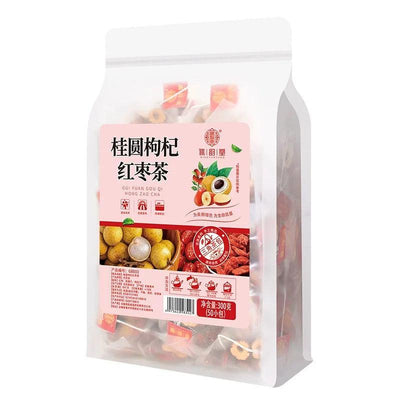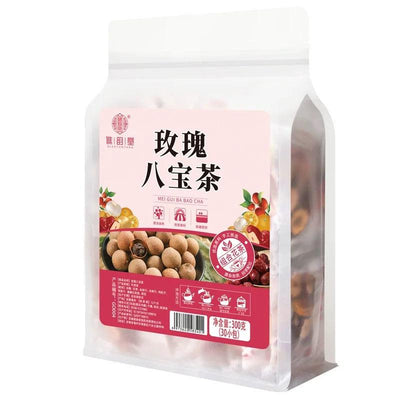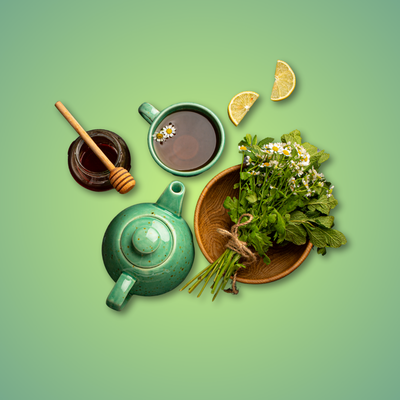In the ever-evolving world of health and wellness, the spotlight often shines on the latest superfoods and cutting-edge nutritional advice. Yet, amidst this constant flux, there's a comforting return to time-honored traditions, particularly in the realm of beverages. One such brew that has stood the test of time and is gaining renewed attention for its potential health benefits is red date tea. This isn't just another fleeting trend; it's a drink with a rich history and a compelling array of properties that could make it your new favorite wellness ritual. Let's delve into the fascinating world of red date tea and uncover its secrets.
What Exactly is Red Date Tea?
At its heart, red date tea is a simple yet profound infusion made from dried red dates. These dates, also known as jujubes or Chinese dates, are the fruit of the Ziziphus jujuba tree, a species with origins rooted deeply in Asian cultures [1]. The name "jujube" itself has an interesting lineage, tracing back to the Ancient Greek word "zízyphon" [4]. Over centuries, this fruit has journeyed through languages and cultures, acquiring various names along the way. In Mandarin, it's known as "hóngzǎo" (红枣), while in other regions and languages, you might encounter terms like "ber" (in Iran and India) or "Sedra" and "Nbeg/Ennab" (in Arabian countries) [5]. This multitude of names speaks to the fruit's widespread recognition and long history across different parts of the world.
While the foundation of red date tea is, unsurprisingly, dried red dates [2], its versatility shines through the numerous additions that can enhance its flavor and health profile. Among the most common companions to red dates in this tea are goji berries, often added for their antioxidant properties and slightly tart flavor [2]. Dried longan, another popular ingredient, lends a subtle sweetness and is often included for its purported benefits in traditional Chinese medicine, particularly for postpartum recovery [2]. The warming spice of ginger is also a frequent addition, especially during colder months, believed to boost circulation and immunity [3]. Beyond these, you might find recipes incorporating black dates or blue dates, each with their own nuances in taste and traditional uses [2]. Some variations even include herbs like dang shen (codonopsis) and astragalus root, often chosen for their Qi-boosting properties in traditional Chinese medicine [11]. Sweeteners like honey or rock sugar are sometimes added to taste, though the natural sweetness of the red dates often makes this unnecessary [2]. Intriguingly, some traditional recipes even call for the addition of an egg, believed to further enhance the tea's nourishing qualities [9]. The sheer variety of potential ingredients highlights the adaptability of red date tea and suggests that its preparation has evolved over time to suit different palates and specific health needs within traditional medicine practices.
Unlocking the Health Secrets: The Benefits of Red Date Tea
Red date tea is more than just a comforting beverage; it's often touted for its impressive array of potential health benefits, many of which have been recognized for centuries in traditional medicine and are now being explored by modern science.
One of the most celebrated attributes of red date tea is its ability to bolster the immune system. Red dates are packed with Vitamin C, a well-known powerhouse nutrient that plays a crucial role in strengthening the body's defenses against illness and infection [6]. Furthermore, these little fruits are rich in antioxidants, compounds that help protect our cells from damage caused by free radicals, those unstable molecules linked to various chronic diseases [6]. The presence of both Vitamin C and these protective antioxidants provides a strong foundation for the claim that regular consumption of red date tea can contribute to a more resilient immune system.
For those seeking to improve their digestive health, red date tea may also offer significant benefits. The natural fibers present in red dates are known to aid the digestive process and can be particularly helpful in alleviating constipation and promoting regular bowel movements [15]. Traditional Chinese Medicine takes this a step further, suggesting that red dates have the ability to tonify the spleen and stomach, two key organs in the TCM understanding of digestion and nutrient absorption [8]. This dual action, combining the physical benefits of fiber with the traditional support for digestive organs, makes red date tea a potentially valuable addition for gut health.
The potential benefits of red date tea extend to the cardiovascular system as well. The antioxidants found in red dates may play a role in lowering cholesterol levels and improving overall blood circulation [15]. From a TCM perspective, red dates are believed to nourish the blood, which in turn supports the healthy function of the heart by providing essential nutrients to this vital organ [16]. This convergence of Western understanding of antioxidants and the Eastern concept of blood nourishment underscores the potential of red date tea in promoting heart health.
Feeling fatigued? Red date tea is often recommended as a natural way to boost energy levels. The fruit contains organic sugars and a wealth of essential nutrients that can provide a sustained release of energy without the crash often associated with caffeine [1]. In TCM, this energy boost is attributed to the tea's ability to replenish both blood and Qi, the body's vital energy force [1]. Therefore, red date tea is not just seen as a quick pick-me-up but also as a drink that contributes to long-term vitality and well-being.
The benefits of red date tea may even extend to the realm of skin health. The vitamins and antioxidants present in the tea are thought to contribute to improved skin health and can help promote a more even and radiant complexion [14]. TCM echoes this, linking well-nourished blood to healthier, more vibrant skin [14]. This suggests that incorporating red date tea into your daily routine could be a delicious way to support not only your internal health but also the appearance of your skin.
In various Asian cultures, particularly in China, red date tea holds a special place in postpartum recovery. It is a common beverage for new mothers during the confinement period, a traditional practice focused on healing and rejuvenation after childbirth [1]. The tea is believed to aid in replenishing lost blood and Qi, support wound healing, and even promote milk production in breastfeeding mothers due to the presence of phytoestrogens [1]. Furthermore, its calming properties are thought to help new mothers relax and cope with the stresses of early motherhood. This long-standing tradition highlights the significant role red date tea plays in supporting women's health during a crucial life stage.
For those struggling with sleeplessness or anxiety, red date tea may offer a natural solution. Jujube has been shown to have calming effects that can improve sleep quality and reduce feelings of anxiety [2]. In TCM, red dates are often associated with the ability to calm the mind and relieve mental tension [2]. The presence of compounds like saponins in jujube, known for their sleep-promoting properties, lends scientific support to this traditional use.
Beyond these well-recognized benefits, red date tea may also offer other advantages, including potentially lowering blood pressure and cholesterol levels [9]. Some research suggests that jujubes possess anti-cancer, anti-inflammatory, and other beneficial properties [2]. It has also been linked to improved liver function and may even aid in wound healing [7]. While further research is often needed to fully understand the extent of these benefits, the existing evidence and long history of traditional use suggest that red date tea is a beverage with significant potential for promoting overall well-being.
From Pot to Cup: Brewing Your Perfect Red Date Tea
Making red date tea at home is a simple and rewarding process. Here's a guide to help you brew your perfect cup:
For a basic red date tea, you'll need just a few key ingredients: dried red dates, water, and optionally, a sweetener like honey or rock sugar [2]. Begin by rinsing the red dates thoroughly under cold water [2]. While not strictly necessary, removing the pits is often recommended in traditional Chinese medicine to reduce the "heatiness" of the drink [2]. Place the rinsed (and pitted, if you prefer) red dates in a pot and add water. The amount of water can be adjusted to your preference, with more water resulting in a lighter tea and less for a stronger brew [3]. Bring the water to a boil, then reduce the heat to low and let the tea simmer for about 30 to 45 minutes, or until the dates become soft and the liquid takes on a reddish-golden hue [2]. Finally, strain the tea to remove the dates and add honey or rock sugar to taste, if desired [2].
The beauty of red date tea lies in its adaptability. Here are a few popular variations and recipes you can try:
- Red Date and Goji Berry Tea: For an extra boost of antioxidants and a slightly tangy flavor, add a handful of goji berries to the pot during the last 10-15 minutes of simmering [2].
- Red Date and Longan Tea: Combine red dates with dried longan for a sweeter, more nourishing tea that is particularly favored during postpartum confinement. Use about 10-12 red dates and 20g of dried longan flesh per liter of water, and simmer for 30-40 minutes [2].
- Red Date and Ginger Tea: Add 2-4 slices of fresh ginger to the pot along with the red dates for a warming and invigorating tea. Some recipes even include boiling peeled eggs in the tea for added nourishment [3].
- Red Date and Black Date Tea: Use a combination of 5-6 dried black dates and 10-12 dried red dates per liter of water. You can also add ginger and honey to this blend for a deeper flavor profile [2].
- Other Variations: Explore adding other traditional Chinese herbs like dang shen (codonopsis) and astragalus root for their potential health benefits, often simmered together for a longer period (around 1.5 hours) [11].
Here are some tips for brewing the best red date tea: Always rinse your red dates before using them [2]. Removing the pits can help reduce the "heatiness" according to TCM principles [2]. Adjust the quantity of water to achieve your desired tea strength [3]. Longer simmering times will result in a more intense flavor and allow more of the dates' beneficial compounds to infuse into the water [2]. For a convenient way to enjoy red date tea on the go, consider using a thermos to steep the dates in hot water for a couple of hours [10]. Some people prefer to blend the cooked dates along with the tea for added fiber and a more concentrated flavor [12].
A Taste of Tradition: The Cultural Story of Red Date Tea
The story of red date tea is deeply intertwined with the cultural history of Asia, particularly China, where the red date, or jujube, has been cultivated for over four millennia [5]. Archaeological evidence suggests its use even in Neolithic times [32]. In Chinese culture, the red date holds a revered status, considered one of the "Five Fruits" and imbued with symbolic meanings of sweetness, fertility, harmony, and happiness [5]. Native to Asia, the jujube tree has adapted to a wide range of climates, making the fruit accessible across various regions [4]. This long history and rich symbolism underscore the significance of red dates beyond their nutritional value; they are an integral part of Chinese heritage and tradition.
Across various Asian cultures, red date tea has a long and established history of traditional uses, particularly within the framework of Traditional Chinese Medicine (TCM) [1]. In TCM, red dates are considered a valuable tonic for nourishing the blood, tonifying Qi (vital energy), strengthening the spleen and stomach, calming the mind, and harmonizing the effects of other herbs in medicinal formulas [1]. One of the most notable traditional uses is in postpartum care. For centuries, red date tea has been a staple for new mothers during the confinement period, believed to aid in recovery, boost milk production, and promote relaxation during this demanding time [1]. Beyond tea, red dates have also been traditionally used in a variety of culinary applications, from adding sweetness and nourishment to porridges and soups to being incorporated into desserts [4]. This widespread use across different aspects of daily life highlights the deep integration of red dates into Asian cultural practices, particularly in the realm of health and wellness.
Good to Know: Potential Side Effects and Precautions
While red date tea is generally considered a safe and beneficial beverage for most people when consumed in moderation [43], it's important to be aware of potential side effects and precautions. Due to the natural sweetness of red dates, excessive consumption may lead to side effects such as bloating, diarrhea, or an increase in blood sugar levels [5]. Individuals with diabetes should therefore exercise caution and monitor their blood sugar levels when drinking red date tea [5].
It's also crucial to consider potential drug interactions. Jujube, the main ingredient in red date tea, may interact with certain medications, including anti-seizure drugs, antidepressants, and medications for diabetes. It may also enhance the effects of sedative medications [5]. If you are currently taking any medications, it is always best to consult with your healthcare provider before regularly consuming red date tea.
Although uncommon, some people may experience allergies to red dates or related plants, such as those with a latex allergy [30]. Discontinue use immediately if any adverse reactions occur. While red date tea is often recommended during the postpartum period, pregnant women, in general, should consume it in moderation and consult their healthcare provider, especially if they have any underlying health conditions. There is limited comprehensive research on the safety of jujube consumption during all stages of pregnancy and breastfeeding [30].
From a Traditional Chinese Medicine perspective, red dates are considered to have warming properties. Therefore, individuals with "heat" conditions, such as constipation, bloating, fever, or a sore throat, should consume red date tea in moderation or avoid it altogether [5]. Lastly, it is generally advised to stop consuming jujube at least two weeks before any scheduled surgery due to its potential effects on blood sugar levels and the central nervous system [30]. Being aware of these potential contraindications and the importance of moderation will help ensure a safe and enjoyable experience with red date tea.
Nutritional Nuggets: What's Inside Red Date Tea?
The impressive array of potential health benefits associated with red date tea can be largely attributed to the rich nutritional profile of red dates themselves. These small fruits are packed with essential vitamins, particularly Vitamin C and various B vitamins [2]. They also boast a significant mineral content, including iron, potassium, calcium, phosphorus, and magnesium [2]. Red dates are also a good source of dietary fiber, which contributes to digestive health [8]. Furthermore, they are rich in antioxidants, including beneficial compounds like flavonoids and polysaccharides, which help protect the body from cellular damage [2]. It's worth noting that red dates do contain natural sugars, which contribute to their sweet taste and energy-boosting properties [5].
When other ingredients are added to red date tea, they contribute their own nutritional benefits. Goji berries, for example, are well-known for their high Vitamin A content and antioxidant properties [2]. Dried longan provides Vitamin C, iron, and potassium [2], while ginger is valued for its antioxidant and anti-inflammatory compounds [2]. These additions can further enhance the overall nutritional value of the tea.
To provide a clearer picture of the nutritional power of red dates, here's a table outlining the key nutrients found in 100g of dried jujube fruit [20]:
|
Nutrient |
Amount |
Unit |
Daily Value (%) |
|
Calories |
281 |
KCAL |
|
|
Fat |
0.5 |
G |
1% |
|
Protein |
4.72 |
G |
9% |
|
Carbohydrate |
72.52 |
G |
26% |
|
Fiber |
6 |
G |
21% |
|
Iron |
5.09 |
MG |
28% |
|
Phosphorus |
68 |
MG |
10% |
|
Potassium |
217 |
MG |
5% |
|
Vitamin C |
217.6 |
MG |
242% |
|
Manganese |
31.067 |
MG |
1351% |
This table illustrates the impressive nutrient density of dried red dates, highlighting why red date tea is considered such a nourishing beverage.
Where to Find Your Red Dates: A Guide to Purchasing
Finding the ingredients to make red date tea is generally quite easy. Dried red dates can typically be found in Asian supermarkets and grocery stores, often in the aisles with dried and herbal ingredients [4]. For those who prefer to shop online, major retailers like Amazon [9], Walmart [56], and specialty Asian grocery websites like SayWeee[54]! and Yamibuy [39] offer a wide selection of dried red dates, including organic options [55]. You can also find them on sites like Sadaf [58] and Farmers Spice [59]. When purchasing, look for dates that are plump, have a deep red color, and are free from any signs of spoilage.
If you're looking for a more convenient option, pre-made red date tea is also available. You can find red date tea bags and instant mixes on online platforms such as Amazon [52], Walmart [56], and SayWeee[38]!. Some popular brands to look out for include Gold Kili, Prince of Peace, NESTLADY, and Benefits Wellness [38]. While pre-made options offer convenience, making your own tea from dried red dates allows for greater control over the ingredients and brewing process.
Beyond the Brew: Interesting Facts and Modern Takes on Red Date Tea
Red date tea is steeped in more than just hot water; it's infused with interesting facts and has found its way into modern interpretations. For instance, red dates are sometimes affectionately called the "king of nuts" due to their impressive nutritional value [15]. Beyond their health benefits, red dates hold cultural significance in many Asian traditions. In Chinese culture, they are a customary ingredient in wedding tea ceremonies, symbolizing the wish for a sweet and fertile marriage [53].
In the contemporary wellness landscape, red dates are finding new applications. They are being incorporated into modern cuisine, appearing in baked goods, smoothies, and even skincare products, leveraging their antioxidant properties and natural sweetness [32]. In Traditional Chinese Medicine, red dates are known as a "harmonizer," playing a key role in herbal concoctions by enhancing the overall effects of the blend and balancing out the potency of stronger herbs [33]. This ability to create synergy makes them a valuable ingredient in traditional remedies. Ancient wisdom surrounding red dates is also reflected in timeless proverbs that highlight their revered status in Chinese culture [32]. Different regions may also have their own unique ways of preparing and consuming red dates, showcasing the fruit's versatility across various culinary traditions [41]. Historically, red dates were even used to make wine, a testament to their long-standing cultural and culinary importance [32]. Furthermore, a popular modern twist is the combination of red dates with Pu-erh tea, a fermented tea known for its distinct flavor and health benefits, creating a unique and flavorful beverage [15]. These interesting facts and modern interpretations illustrate the enduring appeal and adaptability of red date tea, bridging ancient traditions with contemporary wellness practices.
Conclusion
Red date tea is far more than just a simple drink. It's a time-honored beverage with a rich history, deeply rooted in Asian cultures and particularly valued in Traditional Chinese Medicine. From its potential to boost the immune system and aid digestion to its calming effects and role in postpartum recovery, the benefits of red date tea are numerous and compelling. Its ease of preparation and the versatility to be combined with other beneficial ingredients make it an accessible and enjoyable addition to any wellness routine. While generally safe, it's important to consume red date tea in moderation and be mindful of potential contraindications, especially if you have underlying health conditions or are taking medications. By understanding its nutritional profile, traditional uses, and modern interpretations, you can confidently incorporate this nourishing and flavorful tea into your life and sip your way to enhanced well-being.








